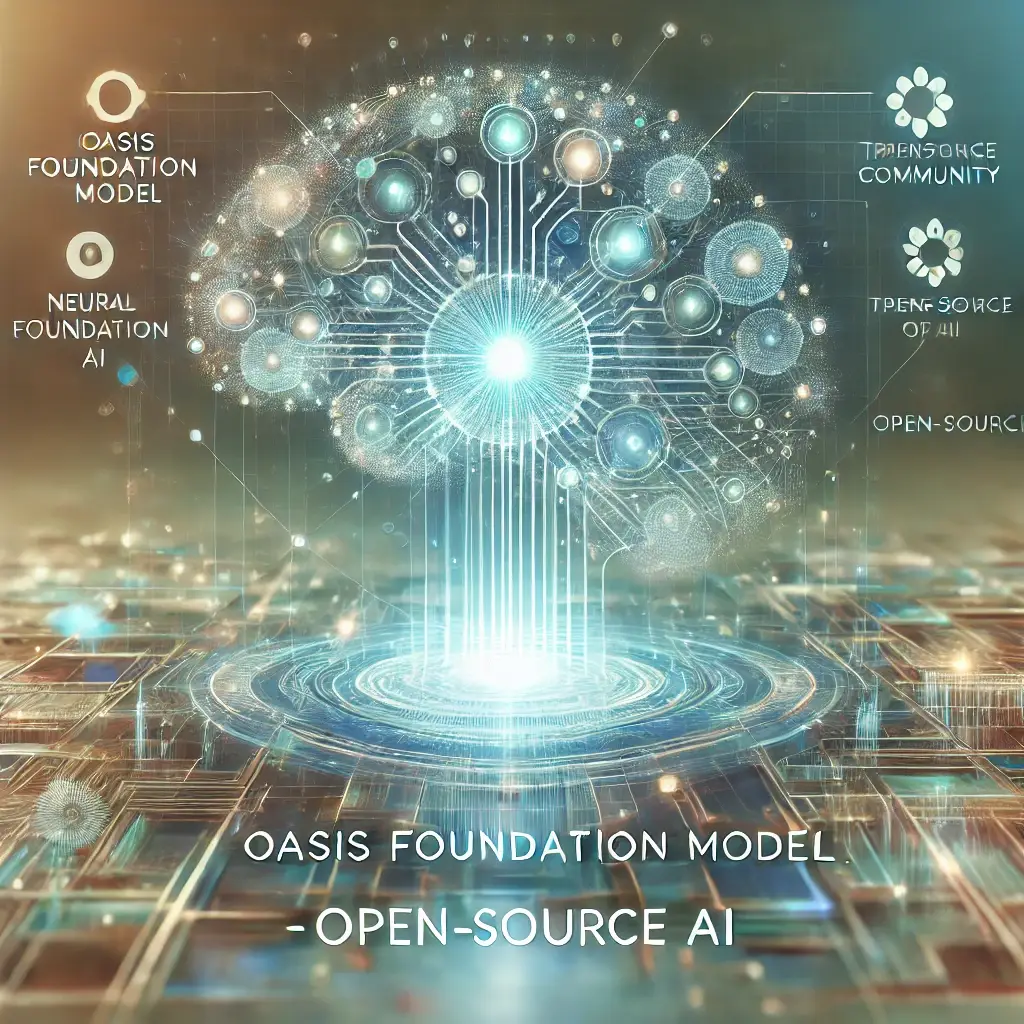Exploring the Oasis Foundation Model: Real-Time AI-Generated Game Worlds
The Oasis Foundation Model is an ambitious new AI project that pushes the boundaries of gaming and generative AI. Unlike traditional game engines that rely on pre-defined assets, physics rules, and scripted interactions, Oasis creates an entire game world in real time through AI-driven generative processes. This isn’t just a minor upgrade or a new game engine—it’s a whole new approach to building interactive digital experiences.
Let’s dive into what makes the Oasis Foundation Model unique, how it works under the hood, and what its capabilities might mean for the future of gaming and interactive media.
—
What Makes Oasis Different?
Typical games are crafted using game engines like Unity or Unreal Engine, where developers build worlds, code mechanics, and structure gameplay. Oasis, on the other hand, removes the need for a traditional game engine. It generates visuals, mechanics, and game dynamics in real-time, responding instantly to user input. This approach has big implications: instead of pre-loading assets or animations, Oasis uses AI to predict and generate each frame based on player interactions, potentially offering an experience that is fully customizable and endlessly variable.
Core Technologies Behind Oasis
The Oasis model is built on a few key technologies:
- Transformer-Based Spatial Autoencoder: At the heart of Oasis is a type of neural network architecture called a spatial autoencoder. Autoencoders are models designed to compress and reconstruct data, but the spatial element here means Oasis can encode spatial relationships—essentially understanding the layout and movement dynamics within each game frame. It enables Oasis to keep track of elements like player location, movement, and interactions within the virtual space.
- Latent Diffusion for Real-Time Generation: Latent diffusion is a technique that enables the model to fill in missing details of an image based on context. Oasis leverages this to predict how the world should look and behave in real-time, making each generated frame look coherent with previous frames. This approach stabilizes the visuals and gameplay, so the game feels consistent even though every frame is generated on the fly.
- Decart’s Inference Engine and Transformer ASIC: Running AI models at interactive speeds can be a bottleneck, especially for real-time gaming. Oasis uses Decart’s specialized inference engine to boost speed, allowing the model to hit a generation rate of about 20 frames per second. Even faster, smoother gameplay is expected with the upcoming Transformer ASIC, an optimized hardware component designed specifically for transformer models like the ones Oasis uses.
How Oasis Creates Real-Time Gameplay
When you interact with Oasis, each key press or action prompts the model to generate the next frame. This means that instead of loading or calculating from a set of pre-designed assets, the model uses AI to interpret your action and simulate the result. Here’s a simplified breakdown of what happens:
- Input Interpretation: Oasis takes your input (like moving left or jumping) and uses that action as a prompt for its AI models.
- Frame Prediction: Using the spatial autoencoder, the model predicts how the scene should evolve. For example, if you jump, it calculates the arc of your movement and places you in the correct location.
- Detail Generation with Latent Diffusion: Finally, the latent diffusion component fills in details, ensuring the visual consistency of elements like textures, lighting, and shadows.
This process happens quickly—at about 20 frames per second—resulting in smooth, interactive gameplay.
The Potential and Challenges of Oasis
While Oasis shows incredible promise, creating an entire game world purely through generative AI isn’t without challenges:
- Error Accumulation: Since each frame depends on previous ones, even small errors can accumulate over time, potentially disrupting visual or gameplay stability. The architecture of Oasis, particularly its spatial autoencoder, is designed to minimize this risk, but long gaming sessions could still pose issues.
- Hardware Demands: Running AI models in real-time is computationally intense. Although Decart’s inference engine and the upcoming Transformer ASIC help reduce these demands, players will still need fairly advanced hardware to experience Oasis at its best.
- Balancing Control and Creativity: In traditional game design, developers meticulously craft experiences, balancing mechanics and pacing for player enjoyment. With Oasis, much of this structure is handed over to the AI, which can lead to unpredictable gameplay. Striking a balance between player agency and AI-driven spontaneity will be key to creating enjoyable experiences.
What’s Next for AI-Driven Games?
The Oasis Foundation Model hints at a future where AI isn’t just a supporting tool but the primary engine of digital experiences. Imagine an ecosystem where games adapt in real-time to player choices, creating personalized storylines, challenges, and worlds. Oasis could lead to fully generative games that feel new with each playthrough, offering boundless exploration without requiring additional development.
In the bigger picture, Oasis is an important step toward using AI for more than just static content generation. Its principles could one day be applied beyond gaming, to fields like education, simulation training, and virtual interaction, allowing AI to respond to our real-world actions with tailored, intelligent experiences.
—
Final Thoughts
The Oasis Foundation Model represents a shift in how we think about game development and interactive media. By fusing real-time AI generation with player-driven input, it has the potential to redefine what’s possible in gaming, especially as hardware advances make this level of processing more accessible. Though challenges remain, Oasis is a fascinating glimpse into a future where AI-generated worlds aren’t limited by pre-defined rules or assets, offering an experience as dynamic and unpredictable as real life itself.

Leave a Reply